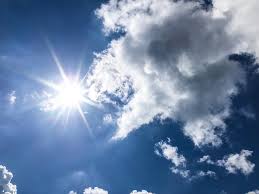 About 75% of the North American coil coating industry is dedicated to building products. Since the lifetime of these products is measured in decades, as opposed to merely years, the weathering performance of the coatings used for this market is critical. Understanding how coatings perform, therefore, is essential. There are many approaches to studying weathering performance, and one of the more interesting techniques to accelerate the weathering process involves the devices described in these two ASTM standards:
About 75% of the North American coil coating industry is dedicated to building products. Since the lifetime of these products is measured in decades, as opposed to merely years, the weathering performance of the coatings used for this market is critical. Understanding how coatings perform, therefore, is essential. There are many approaches to studying weathering performance, and one of the more interesting techniques to accelerate the weathering process involves the devices described in these two ASTM standards:
Tag Archives: sun
Scattering Sunshine
There is no investment you can make which will pay you so well as the effort to scatter sunshine and good cheer through your establishment.
– Orison Swett Marden (1850-1924)
 Scattering sunshine metaphorically is a great idea. The stress of the workplace places great burdens on people and spreading a little sunshine is a simple way to create a more positive environment. But scattering sunshine also has a far less romantic side to it.
Scattering sunshine metaphorically is a great idea. The stress of the workplace places great burdens on people and spreading a little sunshine is a simple way to create a more positive environment. But scattering sunshine also has a far less romantic side to it.
Clouds and shaving cream are white, but they do not contain any white pigment. Driving through dense fog can be treacherous, but it’s just water! Bathroom mirrors also fog, especially if you take a really hot shower on a cold winter day. And titanium dioxide is a clear crystal, yet we call it a white pigment. Scattering of light explains all.
One can discuss scattering by pointing to detailed physics formulae, but that method produces more fog than clarity. I prefer the much simpler method that assumes that the brainy physicists have worked out all the details and that they can be trusted. If that works for you (and it certainly works for me), read on. Continue reading
Fun Facts: Know Your Sun
The Autumnal Equinox is upon us. OK, we know that this means that there are equal amounts of daylight and nighttime. We know that winter is coming to the Northern Hemisphere and that summer is coming to the Southern Hemisphere. But there are other Fun Sun Facts worth mentioning.
At the risk of sounding like a geocentrist, it is easier to describe the movement of the Sun as if the Earth were stationary and the Sun revolved around it. On the Autumnal Equinox, the sun is directly above the equator for this day. If you were standing on the equator at the Equinox, at noon, you would see no shadows, since the sun is directly overhead. The same thing happens on the Vernal (Spring) Equinox. If you want to check this out yourself, catch a flight to Quito, Ecuador, which is right on the equator. The official name of Ecuador, by the way, is the República del Ecuador, which translates into “Republic of the Equator.”
The sun is now making its visit to the southern Hemisphere, and has been doing so since the Summer Solstice (June 22 this year), that day when the sun is as far north as it ever travels. Its “equator” that day is the 23.5°N latitude, also called the Tropic of Cancer. Six months later the sun is as far south as it goes, and—you guessed it—the “equator” on that day, the Winter Solstice (December 21), is 23.5°S latitude, the Tropic of Capricorn.
These Solstice days make for interesting times in those communities lying at or above the Arctic Circle 66°N latitude. On the Summer Solstice, they receive 24 hours of daylight; the Winter Solstice brings them 24 hours of darkness. Here is a good representation of the Sun and the Earth on the Summer Solstice.

